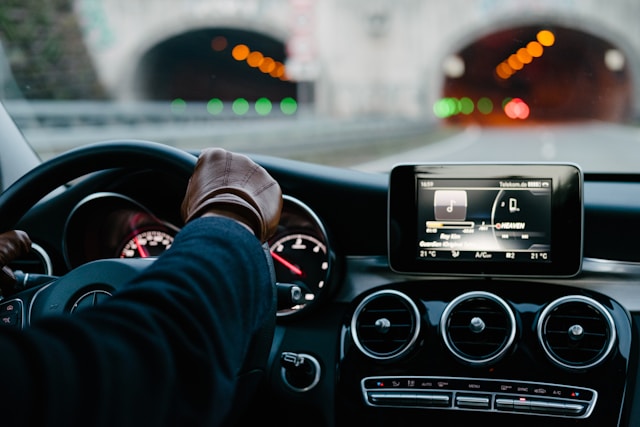Driving at night is more risky than driving during the day since visibility diminishes and the risk of tiredness increases.
According to NHTSA, fatal accidents are three times more common at night than during the day.
Also, most motorers often complain about feeling less confident while driving at night, even without vision problems.
However, if you’re on a road trip, it is not possible to avoid nighttime driving completely. Thus, safe driving is not the only way to prevent mishaps on the road.
Therefore, here are some effective tips to ensure a safe and enjoyable road trip where you can stay on the road until you find the best motel for the night.
Maintaining Road Safety During Nighttime
Given below are some of the most effective road safety measures that you must consider when on a road trip during the night—
1. Recognize The Threats
As we already discussed, nighttime driving comes with several challenges. Here are some of the common factors that can make it difficult for drivers at night:
- Impaired depth perception.
- Color recognition.
- Peripheral vision.
- The glare of headlights from oncoming vehicles.
Moreover, visibility is limited to approximately 500 feet during nighttime. This makes it challenging for drivers to react to road hazards, particularly at higher speeds.
Another major factor that contributes to nighttime road accidents is speeding heavy vehicles. Severe truck accidents frequently occur between 9 PM and 6 AM. This results from additional causes like reduced visibility, increased wildlife activity, and tired drivers who ignore traffic rules.
A Truck accident lawyer in Louisville can help you when you face such adverse situations during your road trip.
However, to avoid fatal errors, it is essential to maintain a safe distance from other trucks, as tired drivers may make fatal mistakes.
2. Avoid Fatigue And Stay Alert
Driving requires attentiveness, which can be compromised if you’re not well-rested. To increase alertness, try drinking caffeine, listening to music, or opening a window for fresh air.
However, if none of these methods work, be honest with yourself and find a safe place to rest.
Drowsy-driving crashes are most likely between midnight and 6 a.m. Therefore, be aware of these hours and keep yourself alert.
Also, some drivers have reported turning the radio on, rolling down the windows periodically for fresh air, or talking or singing to themselves to help stay alert.
To avoid nighttime incidents, remain vigilant for lights and movement, and check your mirrors.
Moreover, it’s crucial to stay alert for other cars’ headlights and objects, as it’s harder to see animals on the side of the road, children playing in the street, or debris.
Thus, staying alert and maintaining defensive driving skills is essential, especially at night. Keep your mirrors clean and pointed in a direction that makes it easier to see but also loses any glare, if possible.
3. Defend Yourself Against All Odds

Smart driving is a major part of safe driving. Nighttime for road trippers often becomes an anxious time when they lose their cool and simply want to park at the next motel.
However, this anxiety often has a greater cost. When on the road, you’re the only protector for yourself.
When driving at night, you must avoid accidents by increasing your visibility. To do this, slow down and use high beams when safe without reducing visibility for other drivers.
Also, avoid following too closely during dark hours and inclement weather, as it can make other drivers nervous and increase the risk of a wreck.
Using bright and distracting headlights can limit visibility and make the driver ahead of you nervous, causing problems.
To avoid these risks, follow best practices and increase visibility when possible. Moreover, you must remember to practice these strategies at night to ensure a safe and smooth driving experience.
4. Never Risk A Broken Car
Maintaining cleanliness and pointing headlights are crucial for safe night driving.
Driving too long with only one headlamp burning can reduce visibility and increase the risk of burning out another. Other than accidents, this can also lead to a police ticket and a dangerous situation.
Therefore, make sure your lights always point in the right direction.
Also, some states may have inspections, which can be a good time to replace bulbs and have professionals assist.
Moreover, routine vehicle maintenance, including oil changes, battery checks, and tire rotations, can help avoid car troubles.
Fixing cracked windshields or broken headlights makes driving at night safer.
Thus, ask a mechanic to check if your car’s headlights are misaligned. This is a common outcome during road trips as your vehicle is being overused.
Therefore, test headlights in low-and high-beam settings to ensure proper functioning.
5. Stay Prepared For Emergency Situations

To ensure a safe driving experience, planning ahead and packing emergency supplies in your vehicle is crucial.
These supplies include the following basic items:
- A cell phone.
- First aid kit.
- Charger.
- Tire gauge.
- Flashlight.
- Flares.
- Nonperishable food.
- Jumper cables.
- Blankets.
- Extra windshield washer fluid.
Additionally, bringing extra headlight bulbs and a safety vest can increase visibility in the dark.
Moreover, with the pandemic, it’s also advisable to bring extra face masks and antimicrobial wipes to clean high-touch surfaces at gas stations or hotels.
Therefore, if you need to stop on the shoulder, turn on hazard lights, wear a reflective safety vest, and place flares to increase visibility.
Lastly, changing tires in the dark on the side of the road can increase the risk of being hit by another vehicle, so it’s important to take precautions.
Concluding Words about Ensuring Your Safety
Driving slower at night is crucial due to reduced visibility and increased chances of encountering distracted drivers.
Furthermore, in the event of rain or snow, the Federal Motor Carrier Safety Administration advises lowering speed by half and by one-third, respectively.
On the other hand, when approaching a slower vehicle, it is essential to maintain a three-second difference between you and the car in front of you. This rule applies at all times of the day but is particularly important at night.
While driving at night poses increased safety risks, being proactive, planning your route, making smart decisions, and following these tips can help make the driving experience safer for you and others on the road.
Therefore, to ensure you and your vehicle are always covered, learn more about auto insurance from Nationwide.
More Resources:




























